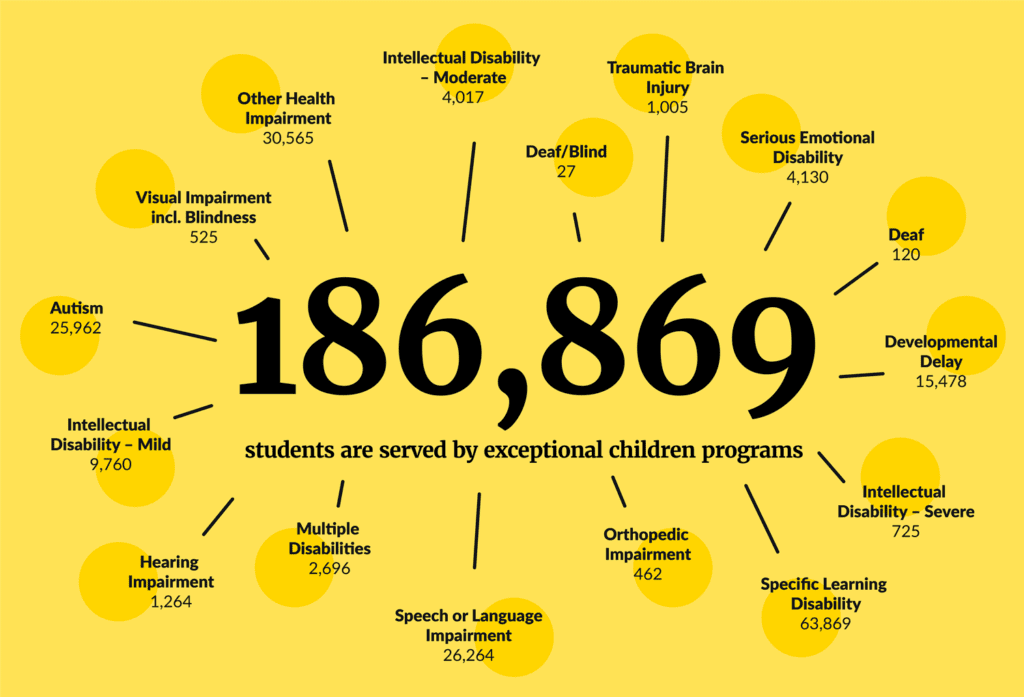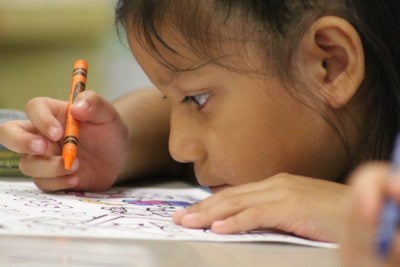
|
|
According to Education Week, “Not every student learns the same.”
“This seemingly simple concept lies at the heart of the term neurodiversity, which refers to differences in the brain’s form or function that impact how people receive, process, and respond to information,” says the outlet.
In North Carolina, there are 16 different exceptional children programs.

According to the Centers for Disease Control (CDC), about 14% of children aged 3-17 in the United States have been diagnosed with either ADHD or a learning disability.
These attention and learning challenges manifest in many ways.
“ADHD can affect a student’s ability to focus, pay attention, listen, or put effort into schoolwork. ADHD can also make students expressive, which can disrupt a class session,” according to an article titled “Exploring teachers’ experiences in addressing ADHD during the post-pandemic transition.”
For neurodivergent students, one-size-fits-all instructional methods can cause anxiety and stress. Worksheets can overwhelm the sensory system, according to this article. Memorization and recall of facts and figures can also be a challenge. This can impact learning as well as self-esteem.
The National Center for Learning Disabilities says that only 17% of teachers indicate they feel “very well prepared” to teach students who have learning and attention challenges.
That disconnect can lead to academic disparities, disengagement from school environments for both students and teachers, and, in some cases, mental health challenges.
![]() Sign up for the EdDaily to start each weekday with the top education news.
Sign up for the EdDaily to start each weekday with the top education news.
A community case study
As part of my research with the Leaders of Equity, Advocacy & Diversity in Education (L.E.A.D.) Ambassadors through the Center for Racial Equity in Education (CREED), I conducted a survey for a small set of students, some of whom had a neurodivergent diagnosis, that focused on the use of worksheets in the classrooms.
In my survey of 17 students, more than 70% of neurodivergent students said that classrooms which heavily utilized worksheets had a “very difficult” or “extremely difficult” impact upon their ability to focus and learn effectively.
My survey further showed that 65% of neurodivergent participants felt confused, overwhelmed, or frustrated when working on worksheets. Many participants explained that worksheets do not cater well to their individual learning styles — particularly those who have ADHD or autism, who struggle with attention span, sensory overload, or wanting a more interactive learning environment. Moreover, dyslexic and dyscalculic students shared that often they struggle following along and struggle feeling like they are growing at all in their learning.
One 10th grader with ADHD reported, “I shut down or stop trying.”
Another student said, “I can’t focus, don’t learn,” highlighting the emotional toll of mismatched educational strategies.
A new way forward
According to the article in Education Week, “Teachers historically have taken a ‘deficits-based‘ approach to teaching students with learning diagnoses. That means they see and assess neurodivergent students based on their skill gaps as compared to their neurotypical peers, experts say. This stands in direct contrast to a ‘strengths-based‘ approach, which embraces the concept of neurodiversity and acknowledges the positive attributes of all students — including those who struggle to learn in traditional formats.”
This 2023 study using data from North Carolina found students with disabilities “perform better when placed in inclusive classrooms and when these classrooms have co-teachers.”
It is crucial for teachers, policymakers, and leaders to rethink how different students learn differently.
— Nandhana Ramesh
Worksheets need to give way to:
- Diverse forms of learning (visuals, discussions, hands-on projects),
- Flexible assessment strategies that allow for audio, visual, or innovative responses, and
- Structured supports like checklists, movement breaks, and real-world application.
More than anything, we need to ensure that students and families have the ability to receive Individualized Education Programs (IEP) and Section 504 accommodations.
The site understood.org is a great resource for details about differences in learning.
Students, you can join local school board meetings and advocate for inclusive curriculum practices. Sharing one’s own educational story can strongly facilitate teachers’ understanding and empathy.
CREED is currently gathering stories from students, parents, and teachers sharing how learning differences impact them and educational outcomes as well as calls to actions for more inclusive, affirming, and effective practices and policies.
Recommended reading




